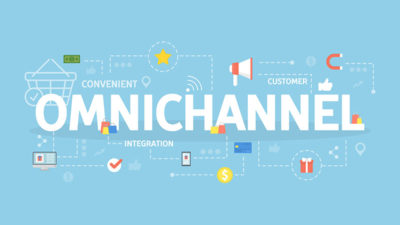
What is Omnichannel Marketing?
Marketing is an ever changing field where new technology, strategies and terminology is common place. Omnichannel marketing, which first started making an appearance in the marketing scene back in 2010, began to increase in popularity and what was once an unfamiliar trendy buzzword soon became a key point in running successful marketing campaigns.
Through this style of marketing you’re using digital and/or traditional marketing channels which start with the customer and gives them an integrated shopping experience from start to finish across the multiple channels the retailer has. This means that all of the channels across the board from the app to the physical catalogue will be giving out one unified message to help build a persona for your brand.
This is becoming more important as consumers are expecting more and more from brands to have a personalized connection to their wants and needs through these various channels and for the brands that aren’t doing this are starting to fall behind their competition.
Multichannel vs Omnichannel Marketing
Multichannel marketing has a pretty static message throughout the number of channels and doesn’t change or update to match the consumers’ needs, where as omnichannel marketing customises its messages across each of the channels when the customer engages with the brand.
The main difference between these two types of marketing is that multichannel marketing tends to put the brand at the forefront of their marketing efforts and sends the same message out to all customers, whereas omnichannel puts the customer as the centre of their strategy and will tailor the experience to however the customer is interacting with the brand through other channels.
Here’s some examples of omni channel marketing to help you grasp the difference:
- A new customer has signed up to the brands mailing list and receives a welcome message and discount code for being a first time shopper.
- A customer enters the store to do some shopping and receives an email or text message with the current promotions that are on.
- A customer has left some products in their shopping cart on the website but has left the site, therefore an email is sent to that customer reminding them of the items they’ve to try and encourage them to come back and purchase.
- A customer completes a purchase and asks to be notified through SMS and receives updates on their orders whereabouts through text message.
All of these examples can be easily reused to help bring back customers to the website and make more purchases with the company.
Is There Evidence That Omnichannel Marketing Works?
Yes, there are plenty of statistics that you can find that backs up omnichannel marketing and its effectiveness. Here’s a few of those impressive statistics:
- Companies with extremely strong omnichannel customer engagement retain on average 89% of their customers, compared to 33% for companies with weak omnichannel customer engagement. (Aberdeen Group)
- Businesses that adopt omni-channel strategies achieve 91% greater year-over-year customer retention rates compared to business that don’t. (Aspect Software)
- Omnichannel shoppers have a 30% higher lifetime value than those who shop using only one channel. (Google)
- 73% of customers use multiple channels during their shopping journey. (Harvard Business Review)
- Rate of customer satisfaction is 23x higher for companies that use omnichannel marketing. (Aberdeen Group)
- 87 percent of shoppers think companies need to put more effort into providing a seamless user experience. (Zendesk)
What’s The Best Way To Master Omnichannel Marketing Moving Forward?
- Start from the bottom up. Get the whole team on board with the omnichannel marketing strategy – this will ensure that everyone is using the customers data to try and better understand what the customer wants and to tailor their work in order to fulfil exactly that. The more they know, the better.
- Be sure to track and analyse your customers data and learn as much as you can about them so you’re able to make the experience for the customer a enjoyable and memorable one. As well as this, gather the customers feedback and use this to help you alter your side of things to improve your service.
- Make sure the message you’re sending are relevant and have value to the customers. One way of making this easier is by splitting your mailing list into smaller lists where you can categorise your customers to better suit their interests.
- The more you test and gather data around your customers the better the insight you’ll have to be able to improve your service to them. This comes with a lot of testing throughout your channels, such as the tone of messages, what time you send out your messages, headers and subject lines in emails, what colourways work best, what images are used etc. Keep updating and retrying your process to give yourself the capability of getting the best results.